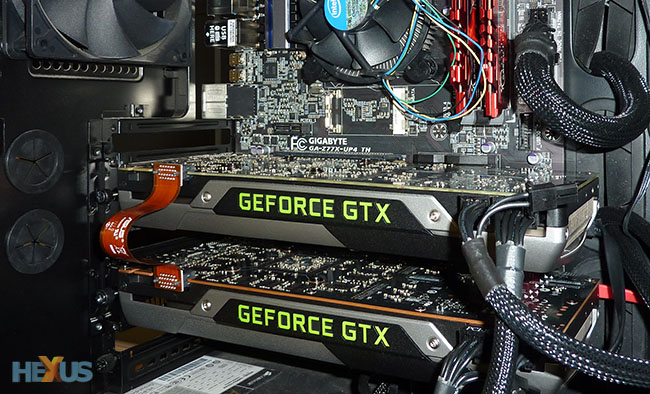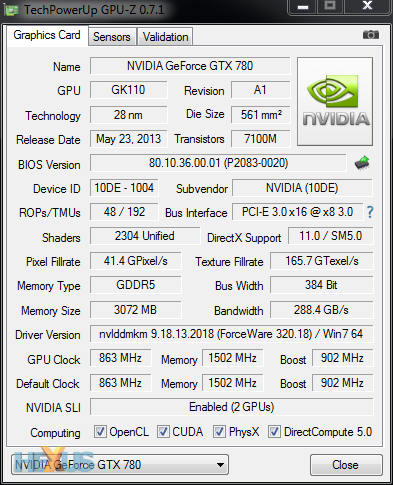Take Two

You've probably read all about the new GeForce GTX 780 graphics card launched earlier today. It is based on the same GK110 architecture as the GeForce GTX Titan but comes in at a lower price point. Lower is comparative of course, as the GTX 780 costs a whopping £550 - compared to Titan's £900 - and is therefore significantly more expensive than GeForce GTX 680 (£360) and Radeon HD 7970 GHz (£350).
Whereas the range-topping Titan represents abysmal value for money, despite unparalleled single-GPU performance, GTX 780's performance-per-pound ratio isn't quite so poor. Indeed, it is possible to purchase two such GTX 780s for not a lot more than a single Titan, and on paper, lassoing two cards seems like a reasonable way to spend £1,000-plus on graphics... if that kind of money is acceptable to you.

So it's only fair to investigate the kind of performance returns available by running two-way GTX 780. Nvidia partner KFA² duly obliged by sending in another reference-like card for this exact purpose, and, as pictured above, we put it in the test machine straight away.
We'll excuse you for thinking they're Titan cards instead. KFA²'s card is the one on the top, by the way.
We're using our standard PC rig that's powered by a Corsair AX750W PSU. You may read that uber-powerful PSUs are required for high-end cards, especially in multi-GPU configurations, but this is not the case, as we never saw the at-wall watt-meter jump past 470W during testing.
To make things interesting, we've rebenched the dual-GPU GeForce GTX 690 and Radeon HD 7990 cards and thrown them into the mixer. It makes sense to include these when the focus on the article is multi-GPU usage.
The 11-card line-up, detailed on the next page, has been tested on the very latest drivers from both teams, so let's now see if there's genuine potential for a GeForce GTX 790-type card in the near future.









